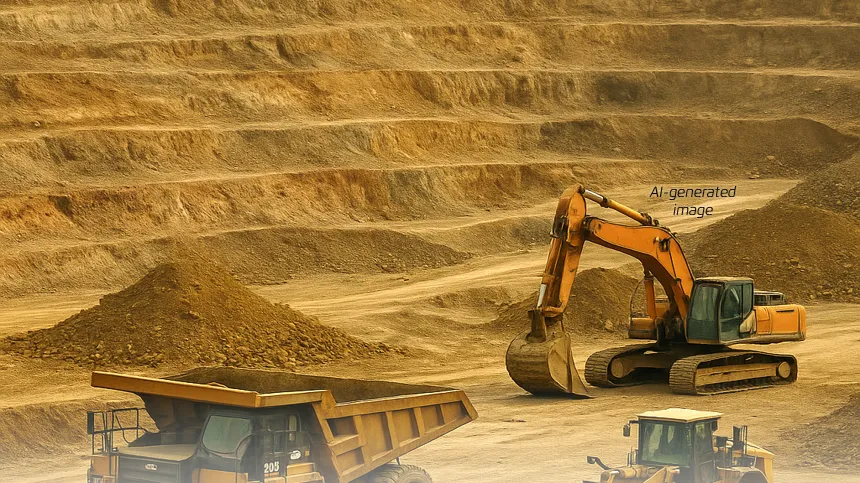Mali’s Gold Output Drops 32% Amid Barrick Mine Suspension

Mali’s gold output plunges 32% after Barrick’s Loulo-Gounkoto mine suspension, exposing deep tensions over the nation’s new mining code.
Mali’s industrial gold production has suffered a sharp 32% year-on-year decline, falling to 26.2 tons by the end of August, as the country grapples with the fallout from the prolonged suspension of operations at Barrick Mining Corporation’s Loulo-Gounkoto mine. Once the backbone of Mali’s gold output and a major foreign exchange earner, the mine was forced to halt production for over six months amid ongoing tax disputes and tensions surrounding the nation’s new mining code. The disruption has not only curtailed Mali’s overall gold exports but also left production 22.5% below the government’s forecast of 33.8 tons, casting serious doubt on the 2025 annual target of 54.7 tons.
The Loulo-Gounkoto complex, a flagship operation accounting for roughly one-third of Mali’s total industrial gold production, resumed limited operations in July 2025, now under partial government control. However, production remains constrained, currently operating at just 25% of normal capacity. According to industry sources, full recovery could take at least four months, hindered by shortages of critical spare parts and disruptions in supply chains. Barrick Mining has since removed Loulo-Gounkoto from its 2025 output forecast, though the Malian government maintains an optimistic projection of 17.5 tons from the mine over the remainder of the year.
Beyond Barrick, Mali’s gold sector continues to depend heavily on other international operators, including B2Gold, Resolute Mining, Allied Gold, and Endeavour Mining. Yet, the operating climate remains challenging. Persistent regulatory uncertainty, stemming from recent legislative changes and heightened resource nationalism, has strained relationships between the government and foreign investors. The new mining code, intended to secure a larger share of revenues for the state, has instead contributed to a perception of policy instability, discouraging new exploration investments and delaying project expansions.
This latest production slump follows a 23% decline in 2024, underscoring a multi-year trend of reduced output linked to governance issues, contract renegotiations, and operational disruptions. Gold accounts for over 70% of Mali’s export earnings, and sustained underperformance in the sector could have far-reaching economic consequences, including reduced fiscal revenues, pressure on foreign reserves, and slower GDP growth. The government now faces the difficult task of balancing national interests with investor confidence to stabilize and revive the mining industry.
If regulatory tensions persist, Mali risks losing its status as one of Africa’s top three gold producers, ceding ground to regional competitors such as Burkina Faso and Côte d’Ivoire. However, effective dialogue with operators, policy predictability, and transparent enforcement of mining laws could restore production stability and investor trust. The path forward will determine whether Mali can regain its position as a reliable gold producer and sustain the mining-driven development that has historically underpinned its economy.
Mini-Glossary
- Industrial Gold Production: Large-scale gold mining operations conducted by formal mining companies, as opposed to small-scale or artisanal mining.
- Mining Code: A country’s legal framework regulating exploration, extraction, and taxation of mineral resources.
- Resource Nationalism: A policy stance where governments seek greater control or revenue share from natural resources, often through taxes or ownership changes.
- Output Forecast: A projection of expected production levels for a specific period based on operational capacity and market conditions.
- Spare Parts Shortages: Supply chain disruptions affecting the availability of critical equipment components needed for continuous mine operations.
- Foreign Exchange Earnings: Income a country receives in foreign currency from exports, crucial for stabilizing national reserves and supporting imports.
